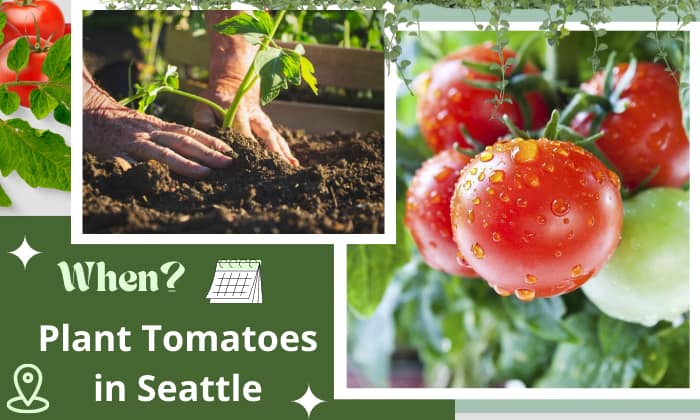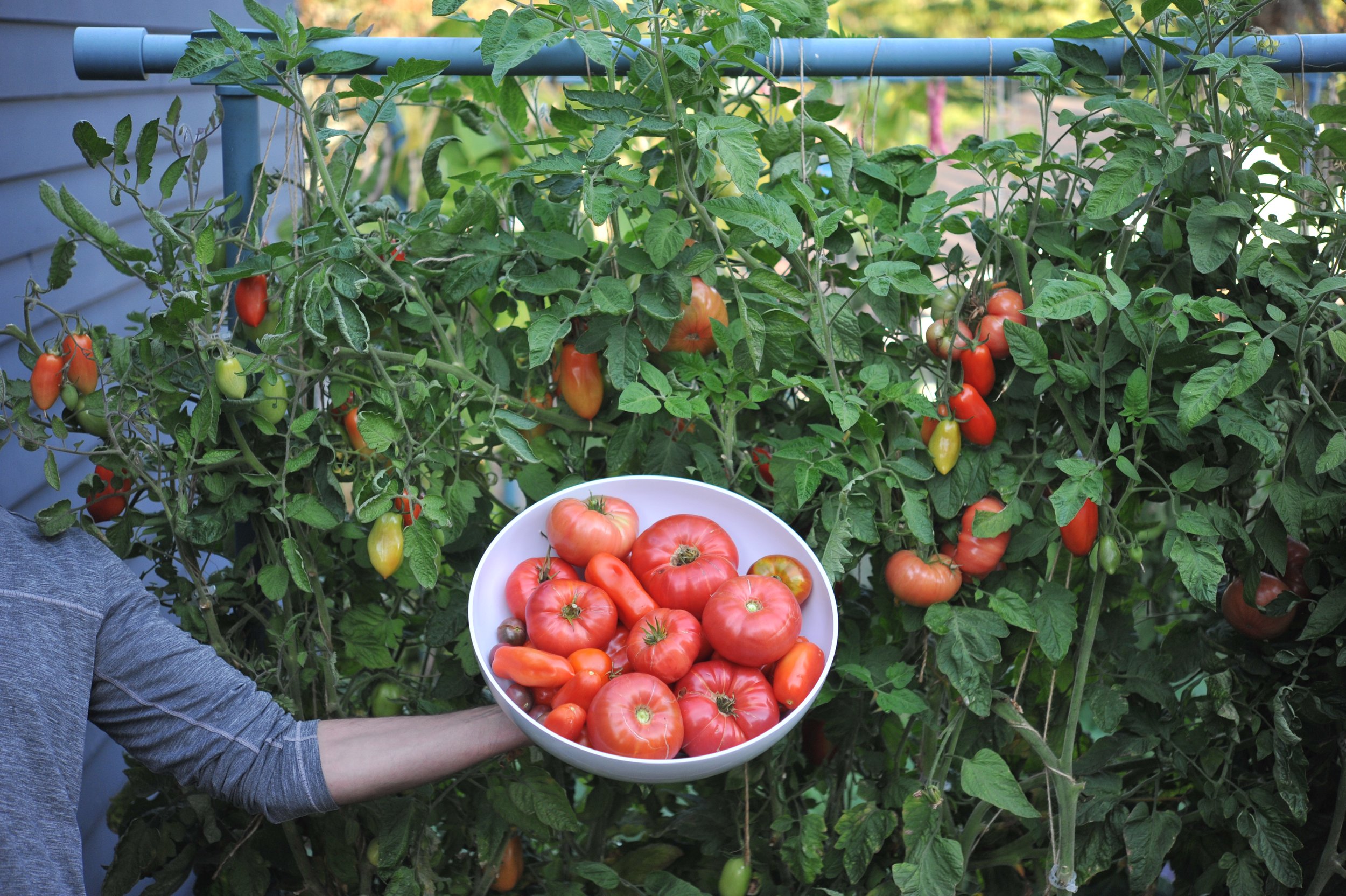In the lush city of Seattle, where gray skies often dominate the landscape, there is a hidden charm found in the blooming gardens of its residents. The cultivation of tomatoes, a staple of many households, poses an intriguing challenge in this climate. As you embark on your gardening journey in Seattle, understanding the optimal timing to plant tomatoes becomes crucial to ensure a bountiful harvest. With the unique combination of a mild maritime climate and a shorter growing season, making the right choices regarding tomato varieties and planting schedules determines the success of your tomato ventures. The forthcoming article provides valuable insights into the art of planting tomatoes in Seattle, unraveling the mysteries that lie beneath yielding plump, juicy tomatoes in the Emerald City.
Best Time to Plant Tomatoes in Seattle
Understanding the local climate
When deciding on the best time to plant tomatoes in Seattle, it is crucial to understand the local climate. Seattle is known for its mild and temperate climate, with cool, damp winters and warm, dry summers. The city experiences average annual temperatures ranging from 45 to 70 degrees Fahrenheit. However, the maritime influence from the nearby Puget Sound can lead to cooler temperatures and higher humidity compared to other regions.
Factors to consider before planting
Before planting tomatoes in Seattle, several factors need to be considered. First, frost is a significant concern in the region, as the growing season is relatively short. It is crucial to determine the average date of the last spring frost, which typically occurs in mid-April. Tomatoes are highly sensitive to frost and should not be planted before the danger has passed.
Another essential factor to consider is the amount of sunlight your planting location receives. Tomatoes require at least six to eight hours of direct sunlight daily for optimal growth and fruit production. Seattle’s cloudy weather can sometimes pose a challenge in providing adequate sunlight, so choosing a sunny spot is crucial.
Recommended planting time
Based on the local climate and factors mentioned earlier, the recommended planting time for tomatoes in Seattle is from late April to early May. By this time, the risk of frost has significantly diminished, and the soil has started to warm up. This timeframe provides tomatoes with enough time to grow and mature before the cooler temperatures return in the fall.
It is essential to note that tomatoes are warm-season crops and cannot tolerate cold temperatures. Planting too early can lead to stunted growth or damage to the plants. Therefore, exercising patience and waiting for the appropriate planting time will contribute to successful tomato cultivation in Seattle.
Choosing Tomato Varieties for Seattle
Tomato varieties suitable for Seattle
When selecting tomato varieties for cultivation in Seattle, it is crucial to choose ones that are well-suited to the local climate and growing conditions. Fortunately, there are several tomato varieties that thrive in Seattle’s maritime climate. Some recommended varieties for Seattle include ‘Early Girl,’ ‘Brandywine,’ ‘Sun Gold,’ ‘Cherokee Purple,’ and ‘Green Zebra.’ These varieties have proven to be dependable performers in the region, offering excellent flavor and resistance to common diseases.
Considerations for selecting varieties
Aside from suitability to the local climate, several other considerations should be taken into account when selecting tomato varieties in Seattle. First, it is essential to determine whether your chosen variety is indeterminate or determinate. Indeterminate tomatoes continue to grow and produce fruit throughout the season, while determinate varieties have a more compact growth habit and tend to ripen their fruit all at once. Depending on your gardening goals and available space, selecting the appropriate growth habit is crucial.
Furthermore, consider the days to maturity for each variety. This information will give you an estimate of how long it will take for the tomatoes to ripen after planting. Choose varieties with shorter days to maturity if you wish to harvest your tomatoes earlier in the season.
Understanding indeterminate vs determinate tomatoes
Indeterminate tomatoes, as mentioned earlier, are known for their continuous growth and fruit production throughout the season. These plants tend to be larger and require sturdy supports, such as stakes or cages, to prevent them from sprawling on the ground. Indeterminate tomatoes are a popular choice among gardeners seeking a prolonged harvest and a greater yield.
Determinate tomatoes, on the other hand, have a more compact growth habit, making them suitable for smaller garden spaces or container gardening. These varieties tend to ripen their fruit all at once and have a relatively shorter lifespan than indeterminate types. While they may not produce as much fruit as indeterminate varieties, determinate tomatoes excel in offering a concentrated harvest, which can be advantageous for canning or preserving purposes.
When choosing between indeterminate and determinate tomatoes, take into consideration your available space, gardening goals, and desired harvest schedule to ensure the best tomato-growing experience in Seattle.
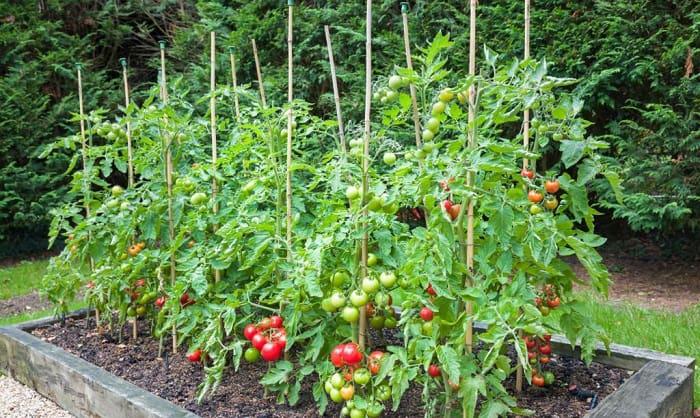
Preparing the Soil for Tomato Planting
Choosing the right location
Choosing the right location for planting tomatoes in Seattle is essential for their success and overall productivity. Tomatoes require a location that receives full sun for at least six to eight hours a day. Look for an area that is not shaded by buildings, tall trees, or other structures that can obstruct sunlight. It is advisable to choose a south-facing or west-facing spot in your garden to maximize exposure to the sun’s rays throughout the day.
Additionally, consider the soil drainage in the chosen location. Tomatoes prefer well-drained soil to prevent waterlogging and root rot. Avoid areas with heavy clay soils or low-lying spots prone to water accumulation. If your garden has poor drainage, raised beds or amending the soil with organic matter can help improve the drainage and fertility.
Soil testing and amendments
Before planting tomatoes, it is beneficial to perform a soil test to assess the nutrient levels and pH of your garden soil. This will help determine any necessary amendments to ensure optimal tomato growth and productivity. Soil tests can be conducted through local cooperative extension offices or commercial laboratories. The results will provide recommendations for adjusting the soil’s pH and nutrient levels based on the specific needs of tomatoes.
If the soil pH is below the recommended range of 6.0 to 6.8, lime or dolomite can be added to raise the pH. On the other hand, if the pH is too high, sulfur or aluminum sulfate can be used to lower it. Balancing the soil’s pH allows tomatoes to access essential nutrients more effectively.
Furthermore, organic matter, such as compost or well-rotted manure, can be added to improve soil fertility and structure. These amendments contribute to better moisture retention, nutrient availability, and overall soil health.
Preparing the soil bed
Once the soil amendments have been applied based on the soil test results, it is time to prepare the soil bed for tomato planting. Start by removing any weeds, rocks, or debris from the planting area, as they can hinder tomato growth and compete for nutrients.
Using a garden fork or tiller, loosen the soil to a depth of 8 to 10 inches. This will provide ample space for the roots to penetrate and promote healthy plant development. Take care not to overwork the soil, as excessive tilling can disrupt the soil structure and lead to compaction.
Next, create a shallow trench or individual planting holes for your tomato plants. Space the plants according to the recommended spacing guidelines for the specific variety you have chosen. Add a small amount of balanced organic fertilizer or slow-release fertilizer in each hole or trench, incorporating it with the soil.
Finally, water the soil thoroughly to ensure that it is moist but not waterlogged. This will create a favorable environment for the tomato seedlings, promoting successful establishment and growth.
Starting Tomatoes from Seeds
Starting seeds indoors
Growing tomatoes from seeds indoors is a popular method among gardeners in Seattle, as it allows for an earlier start to the growing season and greater control over the plants’ development. Starting seeds indoors also provides the opportunity to grow a wider variety of tomato cultivars that may not be readily available as seedlings at local nurseries.
To start tomato seeds indoors, begin by selecting high-quality seeds from a reputable supplier. Choose varieties that suit your preferences and are well-suited to Seattle’s climate. Consider factors such as days to maturity, disease resistance, and growth habit when selecting tomato seeds.
Sow the seeds in seed trays or individual pots filled with a well-draining seed starting mix. Plant the seeds at a depth of approximately ¼ to ½ inch and cover them lightly with soil. Water the soil gently to ensure proper moisture, but be careful not to waterlog the seeds.
Place the seed trays or pots in a warm location with consistent temperatures between 70 and 80 degrees Fahrenheit. You can use a seedling heat mat or a warm spot in your house, such as near a sunny window. Maintain a consistent level of moisture in the soil by misting or watering lightly as needed.
As the seedlings emerge and develop their first set of true leaves, thin them out if necessary to provide adequate space for growth. Gradually acclimate the seedlings to outdoor conditions by exposing them to increasing amounts of sunlight and reducing indoor temperature over a period of one to two weeks.
Transplanting seedlings
Once the seedlings have developed sufficient size and are well-acclimated to outdoor conditions, they are ready to be transplanted into the garden. Wait until all danger of frost has passed, and the soil temperature has warmed up to at least 60 degrees Fahrenheit.
Prepare the planting bed as previously described, ensuring that it receives full sun and has been adequately amended. Dig a hole or trench for each seedling, spacing them according to the recommended guidelines for the specific variety.
Gently remove the seedlings from their containers, taking care not to damage the delicate roots. Place each seedling in the prepared hole or trench, ensuring that the root ball is level with or slightly below the soil surface. Backfill the hole with soil, pressing gently to eliminate air pockets around the roots.
Water the newly transplanted seedlings thoroughly and provide support, such as stakes or cages, if necessary, to ensure proper growth and stability. Monitor the plants closely for the first few days to ensure they are adjusting well to their new environment.
Hardening off the plants
Before transplanting the seedlings into the garden, it is crucial to harden them off gradually. This process involves exposing the seedlings to outdoor conditions gradually, allowing them to adapt to the changing environment.
Start by placing the seedlings in a sheltered location, such as a porch or under a shade cloth, for a few hours each day. Gradually increase their exposure to direct sunlight and outdoor temperatures over a period of one to two weeks.
Hardening off helps strengthen the seedlings and reduces the risk of transplant shock when transitioning them from indoor to outdoor conditions. By gradually introducing them to the elements, the seedlings will become more resilient and better equipped to handle the challenges of the garden.
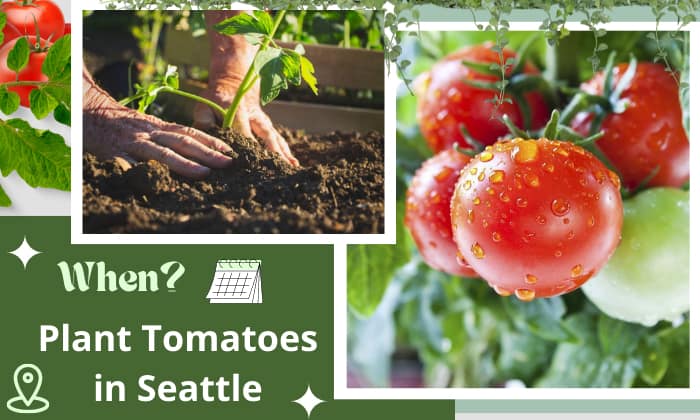
Purchasing Tomato Plants in Seattle
Nurseries and garden centers
If starting tomato seeds indoors is not an option or you prefer the convenience of purchasing established seedlings, nurseries and garden centers in Seattle offer a wide selection of tomato plants during the planting season. These establishments specialize in providing healthy and vigorous vegetable plants, including various tomato varieties suited to the local climate.
When visiting nurseries or garden centers, take the time to explore the different varieties available and seek guidance from knowledgeable staff regarding the best choices for your specific garden conditions. Look for well-maintained plants with sturdy stems, vibrant leaves, and no signs of pests or diseases.
Selecting healthy plants
When purchasing tomato plants, it is essential to choose healthy specimens to ensure their successful growth and productivity. Examine the plants closely for any signs of stress, wilting, or discoloration. Avoid plants with yellowing or brown leaves, as these may indicate nutrient deficiencies or disease problems.
Additionally, check for any pests, such as aphids or whiteflies, which can cause damage to tomato plants. Inspecting the undersides of leaves and the stems is particularly crucial, as pests often hide in these areas. If pests are detected, it is advisable to select a different plant to prevent introducing pests into your garden.
Transplanting purchased tomatoes
Once you have purchased tomato plants from a nursery or garden center, it is important to transplant them into your garden as soon as possible. Tomato seedlings can become stressed if kept in their original pots for too long, leading to stunted growth or reduced productivity.
Before planting, prepare the soil bed as previously described, ensuring that it is well-drained and receives adequate sunlight. Dig a hole for each tomato plant, spacing them according to the recommended guidelines for the specific variety.
Remove the tomato plant from its container, gently loosen the root ball, and place it in the prepared hole. Backfill the hole with soil, firming it gently to ensure good soil-to-root contact. Water the transplanted plants thoroughly to help settle the soil and provide sufficient moisture for the new roots.
Monitor the plants closely in the days following transplanting, providing necessary support and ensuring they are adapting well to their new environment. With proper care and attention, purchased tomato plants can thrive and produce bountiful yields in your Seattle garden.
Planting Tomatoes in Containers
Choosing the right container
In Seattle, planting tomatoes in containers is a popular option for gardeners with limited space or those who prefer the flexibility of portable gardening. When selecting a container for tomatoes, it is crucial to choose one that is appropriately sized and provides adequate drainage.
Ideally, containers for tomatoes should be at least 18 to 24 inches in diameter and have a depth of 12 to 18 inches. This will allow sufficient space for root development and support the growth of a healthy plant. It is also advisable to choose a container made of a durable material, such as plastic or terracotta, to withstand the elements.
Selecting the appropriate potting mix
Choosing the right potting mix is crucial for container-grown tomatoes in Seattle. It is recommended to use a high-quality potting mix specifically formulated for containers. Avoid using garden soil or compost alone, as they may not provide adequate drainage and can become compacted in containers.
Look for potting mixes that are lightweight, well-draining, and nutrient-rich. These mixes typically contain a combination of peat moss, perlite, vermiculite, and organic matter. The organic matter helps retain moisture, while the perlite and vermiculite aid in drainage and aeration.
Container planting considerations
When planting tomatoes in containers, it is important to consider a few additional factors to ensure the plants’ success.
First, choose determinate tomato varieties for container gardening, as they typically have a more compact growth habit and are better suited to limited spaces. Indeterminate tomatoes may become too large and unwieldy in containers.
Ensure that the containers are placed in a location that receives full sun for at least six to eight hours a day. If necessary, consider using wheeled casters or stands to easily move the containers to maximize sunlight exposure.
Regularly check the moisture levels in the containers, as the soil in containers tends to dry out more quickly compared to plants grown in the ground. Water the plants thoroughly whenever the top inch of soil feels dry to the touch, ensuring that excess water drains out of the container.
Lastly, fertilize the container-grown tomatoes regularly throughout the growing season, as the potting mix may not provide sufficient nutrients on its own. Use a balanced, water-soluble tomato fertilizer according to the manufacturer’s instructions to promote healthy growth and fruit development.
By following these container planting considerations, you can successfully grow tomatoes in limited spaces and enjoy the satisfaction of fresh, homegrown produce in your Seattle garden.
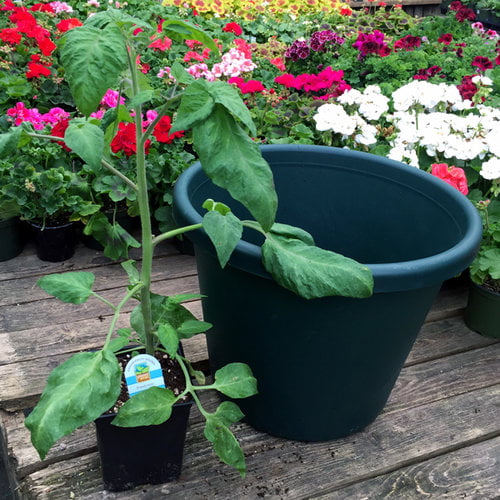
Proper Watering Techniques for Tomato Plants
Watering frequency and depth
Proper watering techniques are essential for the healthy growth and productivity of tomato plants in Seattle. Tomatoes have moderate water requirements and thrive when the soil moisture is kept consistently and evenly moist. However, it is crucial to avoid overwatering, as wet conditions can lead to root rot and other fungal diseases.
The frequency and depth of watering depend on several factors, including weather conditions, soil type, and stage of plant growth. As a general guideline, tomatoes may require watering two to three times per week, depending on the temperature and rainfall.
When watering, aim for deep root penetration by providing enough water to moisten the soil to a depth of 6 to 8 inches. This encourages the roots to grow deeply and access moisture during periods of dry weather. Avoid shallow watering, as it promotes shallow root growth and increases the risk of stress during hot spells.
Avoiding overwatering and underwatering
Both overwatering and underwatering can have detrimental effects on tomato plants. Overwatering can lead to root suffocation, nutrient leaching, and the development of fungal diseases such as root rot and damping-off. Symptoms of overwatering include wilting, yellowing leaves, and stunted growth.
On the other hand, underwatering can result in wilting, blossom drop, reduced fruit production, and increased susceptibility to stress and disease. Symptoms of underwatering include drooping leaves, dry soil, and a generally withered appearance.
To strike the right balance, monitor the moisture levels in the soil regularly and adjust watering practices accordingly. Consider factors such as recent rainfall, temperature, and the appearance of the plants to determine when and how much water to provide.
Irrigation methods for tomatoes
Several irrigation methods can be employed to ensure proper watering for tomato plants in Seattle. One of the most effective methods is drip irrigation, which provides water directly to the plant’s root zone, minimizing evaporation and water wastage. Drip irrigation systems can be set on timers to automate the watering process and ensure consistency.
Another commonly used method is soaker hoses, which release water slowly and evenly along their entire length. Soaker hoses can be placed along the base of the tomato plants and connected to a water source. This method allows for targeted watering and helps conserve water by minimizing runoff.
Alternatively, hand watering with a watering can or a garden hose equipped with a spray nozzle can be used. Take care to water the soil directly and avoid wetting the foliage, as wet leaves can encourage the development of fungal diseases.
Whatever irrigation method you choose, ensure that water is applied evenly and reaches the appropriate soil depth to promote healthy tomato plants and maximize fruit production.
Providing Proper Nutrients for Tomato Plants
Understanding nutrient requirements
Tomato plants have specific nutrient requirements to support their growth and fruit development. Understanding these requirements is essential for providing the proper nutrients and promoting optimal plant health.
The three primary macronutrients required by tomatoes are nitrogen (N), phosphorus (P), and potassium (K). Nitrogen is involved in leaf and stem development, phosphorus supports root growth and flower development, while potassium contributes to overall plant vigor and fruit quality.
In addition to these macronutrients, tomatoes also require secondary nutrients, such as calcium (Ca), magnesium (Mg), and sulfur (S), as well as trace elements, including iron (Fe), manganese (Mn), zinc (Zn), copper (Cu), molybdenum (Mo), and boron (B). These nutrients play essential roles in various metabolic processes and are necessary for healthy plant growth.
Organic vs synthetic fertilizers
When considering nutrient supplementation for tomato plants, gardeners have the option of using either organic or synthetic fertilizers. Organic fertilizers are derived from plant or animal sources and release nutrients slowly over time as they break down. Examples of organic fertilizers include compost, well-rotted manure, bone meal, and fish emulsion.
Synthetic fertilizers, on the other hand, are manufactured and typically deliver nutrients to plants in readily available forms. They provide a quick nutrient boost but may require more frequent applications, as the nutrients can leach out of the soil faster compared to organic fertilizers.
Both organic and synthetic fertilizers can be effective in meeting tomato plant nutrient requirements. The choice between the two depends on personal preferences, the garden’s overall philosophy, and the specific nutrient needs of the plants.
Consider factors such as cost, availability, nutrient release rates, and the potential environmental impacts when selecting fertilizers for your tomato plants.
Fertilizing schedule for optimal growth
To provide proper nutrients to tomato plants, it is important to develop a fertilizing schedule that aligns with their growth stages and requirements. This will promote healthy growth, maximize fruit production, and minimize the risk of nutrient deficiencies or excesses.
When starting tomato plants from seeds, it is generally unnecessary to fertilize until the seedlings have developed their first set of true leaves. At this point, the application of a balanced organic or slow-release fertilizer can be beneficial. Follow the manufacturer’s instructions regarding the proper amount and frequency of fertilizer application.
Once the seedlings are transplanted into the garden or containers, additional fertilizer may be necessary to sustain their growth. Side-dressing with compost or applying a balanced fertilizer every four to six weeks throughout the growing season can help replenish nutrients in the soil and support vigorous plant development.
During the flowering and fruiting stages, a phosphorus-rich fertilizer can be beneficial in promoting blossom formation and fruit set. Avoid excessive nitrogen fertilization during this stage, as it can lead to excessive vegetative growth at the expense of fruit production.
Regularly monitor the plants for any signs of nutrient deficiencies or excesses, such as yellowing leaves or stunted growth. Adjust the fertilization schedule and nutrient application rates as needed to maintain the proper nutrient balance and promote optimal tomato plant growth.
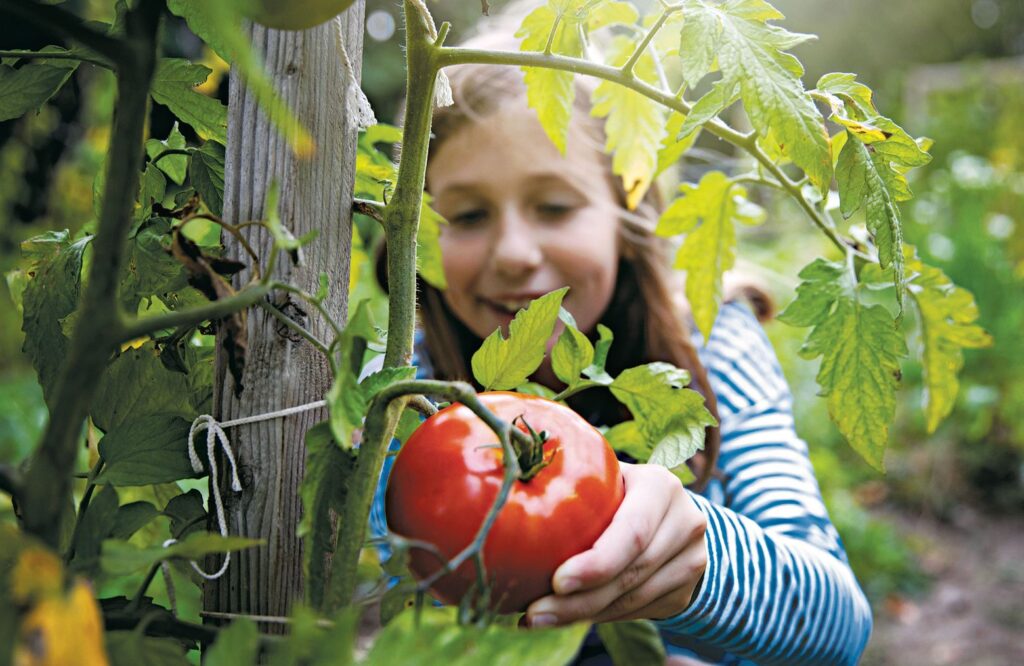
Protecting Tomato Plants from Seattle’s Climate
Protecting against cold temperatures
Seattle’s mild climate does not exempt tomato plants from occasional cold spells, especially during the early and late parts of the growing season. Protecting tomato plants from cold temperatures is crucial to prevent damage and ensure their continued growth and fruit production.
To protect tomatoes from frost and cold temperatures, consider using various methods such as row covers, cloches, or individual plant protection. Row covers made of lightweight fabric can be draped over tomato plants and secured at the edges to prevent frost damage. Cloches, which are transparent coverings placed over individual plants, can provide additional insulation and warmth.
Using temporary structures, such as greenhouses or hoop houses, can also safeguard tomato plants from cold temperatures. These structures create a controlled environment, allowing gardeners to extend the growing season and protect the plants from adverse weather conditions.
Additionally, consider placing mulch around the base of the tomato plants to insulate the soil and maintain more even temperatures. Organic mulch, such as straw or leaves, can also help retain moisture and suppress weed growth.
Dealing with fluctuating temperatures
Seattle’s climate is known for its fluctuating temperatures, with warm days followed by cool nights or sudden weather changes. These temperature fluctuations can stress tomato plants and affect their growth and productivity.
To mitigate the effects of fluctuating temperatures, consider providing additional protection and support to the tomato plants. Staking or using cages can help stabilize the plants, preventing them from toppling over during strong winds or sudden temperature drops.
Monitoring the weather forecast and being prepared to cover the plants when a sudden temperature drop is expected can also help protect the tomato plants. Utilize the previously mentioned methods, such as row covers or cloches, to shield the plants from sudden cold snaps or temperature swings.
Preventing fungal diseases
Seattle’s humid climate can increase the risk of fungal diseases in tomato plants, such as early blight, late blight, or septoria leaf spot. Preventing and managing fungal diseases is crucial to maintain healthy plants and maximize fruit production.
To prevent fungal diseases, promote good air circulation around the tomato plants by providing adequate spacing between them. This will help reduce humidity levels and minimize the risk of fungal spore germination and spread.
Avoid overhead watering, as wet foliage can create a favorable environment for fungal pathogens. Instead, utilize drip irrigation, soaker hoses, or hand watering techniques that directly target the soil and avoid wetting the leaves.
Applying organic or synthetic fungicides as a preventative measure can also help minimize the risk of fungal diseases. These products should be used according to the manufacturer’s instructions and applied before symptoms appear.
Additionally, regularly monitor the plants for any signs of disease, such as yellowing or wilting leaves. Promptly remove and dispose of any infected plant material to prevent the spread of fungal spores.
By taking preventive measures and actively managing fungal diseases, you can protect the tomato plants and enjoy healthy, disease-free harvests in your Seattle garden.
Harvesting and Enjoying Tomatoes in Seattle
Knowing when to harvest
Knowing when to harvest tomatoes is essential to ensure optimal flavor and ripeness. Harvesting too early can result in underripe, tasteless tomatoes, while waiting too long can lead to overripe or spoiled fruit.
When assessing the readiness of tomatoes for harvest, consider their color, size, and feel. Most tomato varieties reach full maturity when the fruit has turned its characteristic full color, be it red, yellow, orange, or any other specific hue. Avoid harvesting tomatoes that are still predominantly green, as they may not fully ripen once picked.
Gently squeeze the tomatoes to assess their firmness. Ripe tomatoes should give slightly under gentle pressure without feeling overly soft or mushy. A ripe tomato will also easily detach from the stem when gently twisted or pulled.
It is important to note that certain varieties, such as heirlooms, may not exhibit the same uniform color or firmness as hybrid varieties. Familiarize yourself with the specific characteristics of the tomato varieties you are growing to make accurate judgments about their ripeness.
Harvesting techniques
To harvest tomatoes, use a pair of sharp pruning shears or garden scissors to cut the stem just above the tomato’s calyx (the green or brown part at the top). Make clean, smooth cuts to avoid damaging the fruit and reduce the risk of introducing pathogens.
Take care not to drop or mishandle the harvested tomatoes to prevent bruising or splitting. Handle the fruit gently and place them in shallow baskets or containers to minimize stacking, as excessive weight can crush the delicate tomatoes.
When harvesting multiple tomatoes, it is advisable to harvest them at different stages of ripeness. This allows for a staggered supply of ripe tomatoes and ensures that none go to waste due to overripening.
Delicious recipes using fresh tomatoes
Once harvested, freshly picked tomatoes can be enjoyed in a myriad of delicious recipes that showcase their vibrant flavor and versatility. In Seattle, where locally grown produce is highly valued, incorporating homegrown tomatoes into meals adds a special touch to the dining experience.
One classic dish that highlights the natural sweetness of ripe tomatoes is the Caprese salad. Layer slices of fresh tomatoes with fresh mozzarella cheese, basil leaves, and a drizzle of balsamic glaze or extra virgin olive oil. This simple salad celebrates the flavors of summer and makes a refreshing appetizer or light lunch.
For heartier fare, tomato-based pasta dishes such as spaghetti marinara or tomato and basil pasta are excellent choices. The robust flavors of ripe tomatoes combined with garlic, herbs, and al dente pasta create a comforting and satisfying meal.
Additionally, homemade tomato sauce or salsa can be prepared using fresh tomatoes. These versatile condiments can be used in various dishes, from pizzas and sandwiches to soups and stews. Experiment with different seasonings and ingredients to create a unique flavor profile that suits your personal taste.
Conclusion:
Growing tomatoes in Seattle requires careful consideration of the local climate, choosing suitable varieties, preparing the soil, and implementing proper watering and fertilization techniques. Understanding the unique challenges posed by Seattle’s climate, such as cold temperatures and fungal diseases, can help gardeners effectively protect their tomato plants and maximize their growth and fruit production. With the right knowledge, techniques, and attention to detail, growing tomatoes in Seattle can be a rewarding and enjoyable experience. Harvesting the ripe, juicy fruits and incorporating them into delicious recipes allows for a true farm-to-table experience, bringing the flavors of summer to the dining table.
